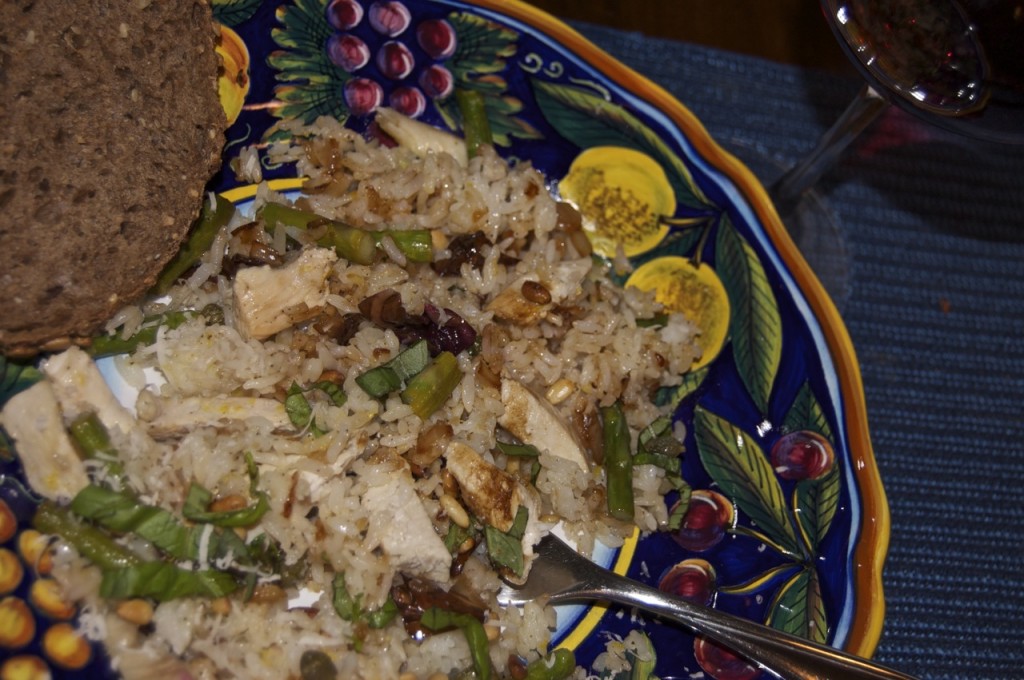For quite awhile I’ve wondered how to work all five components of the flavor palate–salty, sweet, sour, hot and bitter–into cuisines other than Thai, which does it to perfection. Well, six if you count umami (and you should!).
Tonight I did it completely by accident while fashioning a bit of dinner and using up the odds and ends of several other meals.
We had loads of white rice left over from my birthday dinner, so I figured I’d do some sort of stir fry, but I just wasn’t in the mood for Asian. Yeah, strange, I know. Eventually I assembled a few things to create an Italian-ish dish that was somewhere between stir fry and risotto:
>>First I cut a chicken breast into bites, sautéed them in a bit of olive oil, gave them a slosh of a dry white wine and a sprinkling of lemon juice, and cooked out most of the liquid.
>>I removed the chicken from the pan and added chopped onion, sautéed that for a bit, and then added chopped asparagus spears and let them cook a bit.
>>Then I stirred in enough pre-cooked rice for two generous servings (I’d previously stirred the rice with a bit of water and microwaved it to help it rehydrate).
>>Then I added the chicken back in, along with some ribbons of radicchio, and stirred them to incorporate the ingredients, reheat the chicken (not recook it!) and wilt the radicchio.
>>I adjusted the seasoning with salt, black pepper and more lemon juice, plus some lemon zest.
>>I divided the finished product between two plates and garnished with capers, toasted pine nuts, grated parmigiano-reggiano, chiffonade of basil and a few drops of aged balsamic.
One bite into the dish, I knew I’d stumbled upon something fantastic. Himself agreed. Thinking back over the list of ingredients, I realized the dish covered the spectrum of the flavor palate:
The saltiness came from the capers and added salt; the sweet from the aged balsamic; the sour from the lemon juice and capers; the bitter from the radicchio and the hot from the black pepper (I used a lot of black pepper, which works well with lemon chicken). And the umami from the parmigiano-reggiano, which also provided some salt.
The whole was vastly greater than the sum of its parts and made a tasty, satisfying meal. We considered making more but finally decided against it, and instead sat around making yummy sounds and finishing our wine.
It’s instructive to learn how to build flavor this way, layering the six components to create much more than they could provide on their own or in tandem with only one or two others. I can’t wait to try this again with a few tweaks and actually work out the proportions, so the dish is replicable and shareable. And I want to experiment with other dishes and see if I can reproduce the roundness of flavor that we sat down to tonight.
Thai may still be my favorite cuisine, but in figuring out how to borrow its most prominent flavor principle and adapt it to other cuisines, I know I can make good food even better. I feel a little like Prometheus stealing fire…but without any of the negative repercussions!
















